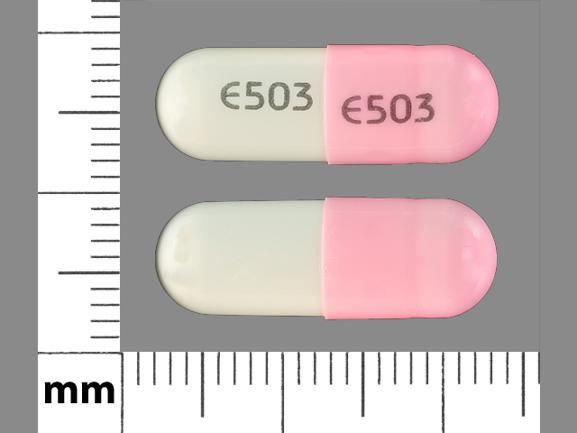Ursodiol Dosage
Medically reviewed by Drugs.com. Last updated on Aug 8, 2024.
Applies to the following strengths: 300 mg; 250 mg; 500 mg; 200 mg; 400 mg
Usual Adult Dose for:
Additional dosage information:
Usual Adult Dose for Biliary Cirrhosis
Tablets: 13 to 15 mg/kg orally per day, given in 2 to 4 divided doses with food
Comments:
- The dose should be adjusted to the patient's needs.
- Scored tablets may be broken in half to provide recommended doses.
Use: Treatment of patients with primary biliary cirrhosis (PBC)
Usual Adult Dose for Gallbladder Disease
Capsules:
Gallstone dissolution: 8 to 10 mg/kg orally per day, given in 2 to 3 divided doses
Gallstone prevention: 300 mg orally 2 times a day
- Maximum dose: 600 mg/day
Comments:
- Safety in the dissolution of gallstones has not been established in patients using this drug beyond 24 months.
- Ultrasound images should be obtained every 6 months for the first year.
- If gallstones appear to have dissolved, treatment should be continued, and dissolution should be confirmed on a repeat ultrasound in 1 to 3 months.
- Most patients who achieve complete dissolution show partial or complete dissolution at the first on-treatment reevaluation.
- If partial stone dissolution is not observed after 12 months of treatment, the likelihood of treatment is significantly reduced.
Uses:
- Patients with radiolucent, noncalcified gallbladder stones less than 20 mm in greatest diameter in whom elective cholecystectomy would be undertaken except for the presence of increased surgical risk due to advanced age, idiosyncratic reaction to general anesthesia, systemic disease, or those who refuse surgery
- For the prevention of gallstone formation in obese patients experiencing rapid weight loss
Renal Dose Adjustments
Data not available
Liver Dose Adjustments
Frequent monitoring recommended.
Treatment of patients with PBC:
- Patients with abnormal liver function tests: Use with caution; providers should maintain bile flow during treatment.
- Patients with hepatic encephalopathy, ascites, or in need of urgent liver transplant: Patients should receive specific appropriate treatment.
- Patients with stable historical liver function test levels: Treatment discontinuation should be considered in patients with liver function test levels increasing to a level considered clinically significant.
Precautions
SPECIAL NOTE:
- Gallbladder stone dissolution with treatment of this drug requires months of therapy.
- Complete dissolution does not occur in all patients, and recurrence of stones within 5 years has been observed in up to 50% of patients who do dissolve their stones on bile acid therapy.
- Patients should be carefully selected for therapy this this drug, and alternative therapies should be considered.
CONTRAINDICATIONS:
- Hypersensitivity or intolerance to the active component or any of the ingredients
- Patients who are allergic to bile acids
- Patients who are not candidate for treatments for this drug due to the presence of calcified cholesterol stones, radiopaque stones, or radiolucent bile pigment stones
- Patients with compelling reasons for cholecystectomy (e.g., unremitting acute cholecystitis, cholangitis, biliary obstruction, gallstone pancreatitis, biliary gastrointestinal fistula)
- Patients with complete biliary obstruction
Safety and efficacy have not been established in pediatric patients.
Consult WARNINGS section for additional precautions.
Dialysis
Data not available
Other Comments
Administration advice:
- Prior to use, patients should shake oral suspensions well.
- Capsules and tablets should be swallowed whole with water.
- Patients who divide tablets should not allow tablet segments to sit in the mouth during administration.
Storage requirements:
- Suspension formulations should not be used after 4 months of opening the bottle.
- Divided tablets should be stored separately and may be kept for up to 28 days.
Reconstitution/preparation techniques:
- Scored tablets that break incorrectly should not be used.
General:
- This drug will not dissolve calcified cholesterol, radiopaque, or radiolucent bile pigment stones.
- Divided tablet segments have a bitter taste and may affect the taste of solid tablets stored in the same container.
Monitoring:
- HEPATIC: Liver function tests (alkaline phosphatase, ALT, AST, bilirubin, GGT) once a month for the first 3 months, then every 3 to 6 months thereafter
Patient advice:
- Advise patients to speak to their healthcare provider if they become pregnant, intend to become pregnant, or are breastfeeding.
More about ursodiol
- Check interactions
- Compare alternatives
- Pricing & coupons
- Reviews (32)
- Drug images
- Side effects
- During pregnancy
- Drug class: gallstone solubilizing agents
- Breastfeeding
- En español
Patient resources
Other brands
Urso, Actigall, Reltone, Urso Forte
Professional resources
Other brands
Related treatment guides
See also:
Further information
Always consult your healthcare provider to ensure the information displayed on this page applies to your personal circumstances.


